This page was written, edited, reviewed & approved by JR Krebs following our comprehensive editorial guidelines. JR Krebs, the Founding Partner, has years of legal experience as a Personal Injury attorney. Our last modified date shows when this page was last reviewed.
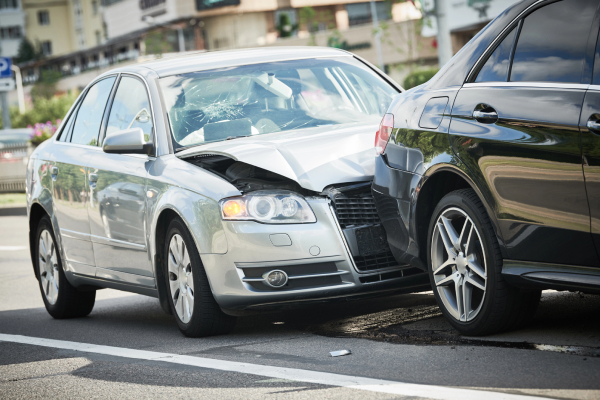
Car crashes are a frequent issue on roads everywhere, often resulting in serious injuries and significant damage. Knowing the various types of collisions can help drivers be more aware of how accidents happen and possibly avoid them.
At Krebs Law, we handle a variety of car accident cases, each with unique circumstances and challenges. Our team is dedicated to helping victims understand their rights and navigate the legal steps necessary to secure compensation.
Crashes occur for many reasons, from driver error to environmental conditions. Each type of accident has specific factors that commonly contribute to its occurrence. Recognizing these factors can not only prevent accidents but also help understand liability when they occur.
If you find yourself involved in an accident, knowing the type involved can assist you in the initial steps you take following the incident.
Car accidents happen due to a multitude of factors that often intertwine. Driver negligence, including distracted driving or speeding, is a leading cause.
However, environmental factors like poor road conditions or inclement weather also play significant roles in auto accidents. Equipment failure, including brake malfunctions or tire blowouts, can additionally lead to accidents.
The dynamics of a car accident are complex and can involve multiple vehicles and victims. Determining the exact cause is crucial for understanding liability and pursuing compensation. Each accident type has its own common causes that, when identified, can significantly aid in the legal process.
At Krebs Law, we meticulously analyze the circumstances of each accident to build a strong case for our clients.
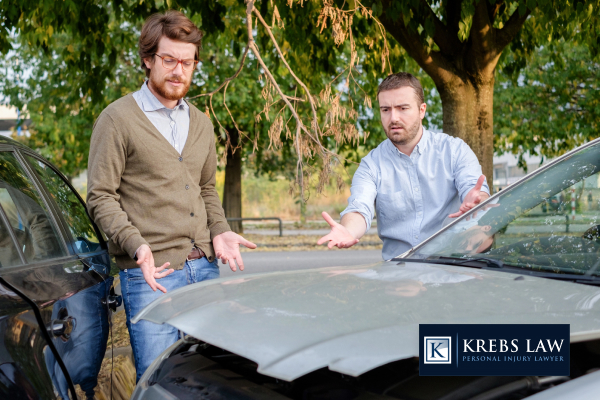
Negligence is not displaying the level of care that a driver of ordinary prudence would have exercised under the same circumstances. This concept is central in personal injury law, especially in car accident cases.
When a driver acts negligently, they can be held liable for the damages from the accident, including injuries sustained to other drivers, passengers, and pedestrians.
In car accidents, showing negligence involves showing that the driver had a duty to drive safely, breached that duty, and caused a crash, leading to injuries or damages.
Understanding these elements can help victims and their loved ones understand their rights and the compensation they may be entitled to. At Krebs Law, we focus on identifying acts of negligence to ensure that our clients receive fair compensation for their losses.
Rear-end collisions are some of the most common types of car accidents. They typically occur when one vehicle strikes the back of another. These crashes can be small, from minor fender benders causing negligible damage to serious crashes resulting in significant injury. These could also result in a personal injury claim.
Here are the common causes of rear-end accidents:
Determining liability in rear-end collisions typically involves understanding who had the last clear chance to avoid the rear end collision accident. Usually, the driver who rear-ends another car is at fault due to following too closely or not giving enough space. However, circumstances such as sudden stops or mechanical failures can also be considered.
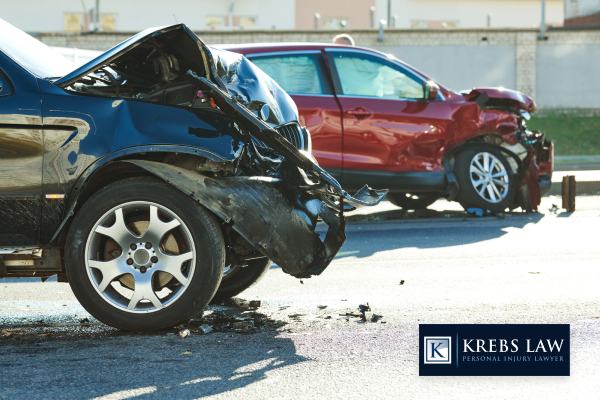
Head-on collisions are extremely dangerous and could result in severe injuries or fatalities. These crashes occur when the fronts of two cars hit each other. The forces involved in head-on collisions make them particularly devastating.
There are several factors leading to head-on collision. Below are some of these factors:
Faults in head-on collisions often result from the driver being on the wrong side of the road. Proving fault in car crash may involve investigating whether the driver was under the influence, distracted, or otherwise negligent during the accident.
T-bone or side-impact collisions occur when the front or rear of another vehicle strikes the very rear driver side of one car. These crashes often happen at intersections and could result in significant vehicle damage and personal injury.
Below are circumstances on how T-bone accidents occur:
Proving fault in T-bone accidents typically requires evidence that one driver failed to follow traffic rules, such as failing to yield the right of way or running a red light. Witness testimony and traffic camera footage can be critical in establishing how the accident occurred.
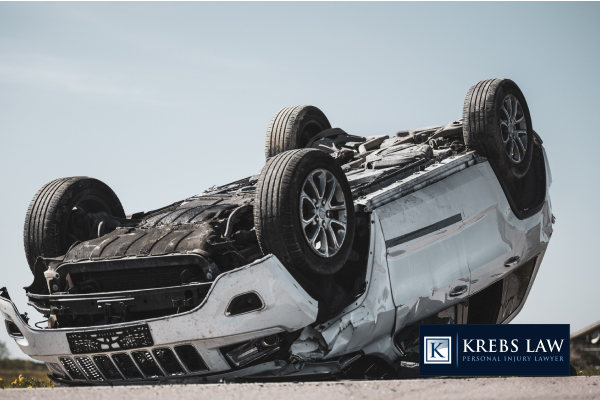
Rollover accidents, while less common than other types of car accidents, these single vehicle crashes are particularly violent and have a higher likelihood of leading to serious injuries or death. These collisions occur when a vehicle flips over onto its side or roof.
Here are common causes of rollover accidents:
Determining legal responsibility in rollover accidents often involves assessing whether the driver's actions, vehicle design, or road conditions played a critical role in the accident. Manufacturers may also be liable if a vehicle defect contributed to the accident.
Below are the steps you should take right after a car accident:
If you've been involved in a car accident, seeking legal advice is essential to protect your rights and ensure you receive the compensation you deserve.
Our experienced team at Krebs Law can guide you through the process of filing your claim, dealing with insurance companies, and, if necessary, representing you in court. We understand the challenges you face and are here to help you every step of the way.
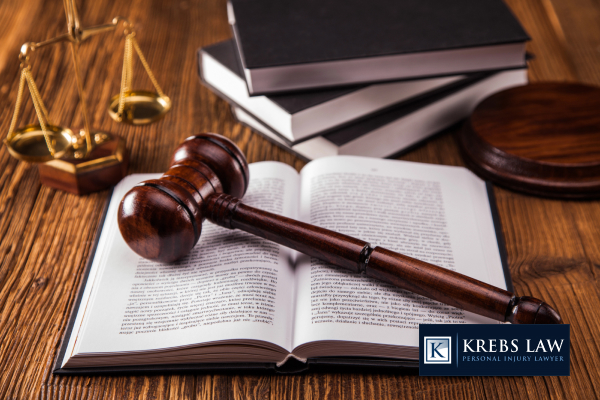
Motor vehicle accidents are always stressful. At Krebs Law, we have experience with all types of motor vehicle crashes. This includes sideswipe accidents and head-on collisions leading to traumatic brain injuries and spinal cord injuries. We can even help you after a rollover accident.
Always see a doctor after your motor vehicle accident first. Then, contact us for help reviewing your auto accident claim.

J.R. is dedicated to providing personalized representation, avoiding a one-size-fits-all approach. He tailors his strategy to the unique challenges and needs of each client and case, ensuring focused and individualized attention.
His practice mainly covers Plaintiff’s Personal Injury, including car and 18-wheeler accidents, slips and falls, dog bites, defective products, and wrongful death. He also handles commercial disputes on contingency, with experience in contracts, construction, and probate. For any dispute headed toward litigation, J.R. develops an aggressive strategy to maximize your recovery through negotiation, arbitration, or trial.


"*" indicates required fields

"*" indicates required fields